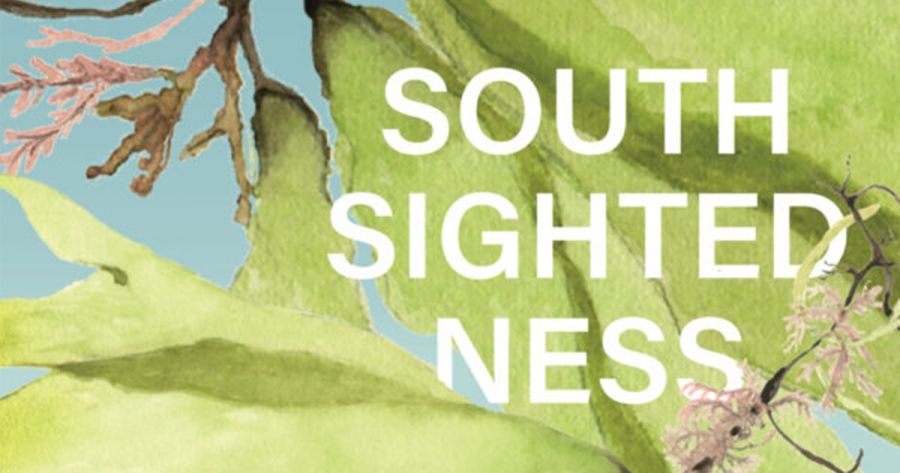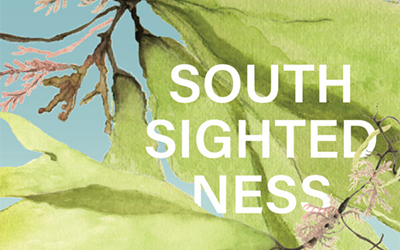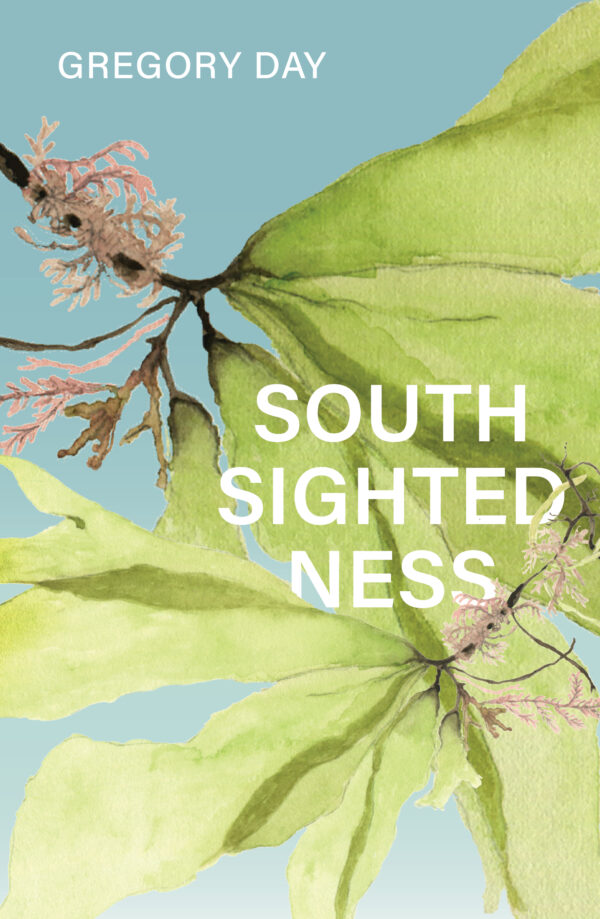
- Free Article: No
- Contents Category: Poetry
- Review Article: Yes
- Article Title: Sandygold
- Article Subtitle: The synthesising power of lyricism
- Online Only: No
- Custom Highlight Text:
Gregory Day is best known as a prize-winning novelist, but it should not surprise his readers to learn that he has, in Southsightedness, made the move to lyric poetry. The lyrical has always figured in his work, which, as well as novels, includes essays, criticism, and music. (Indeed, poetry can be found in Day’s forays into that occult genre, the artist’s book.) Day’s lyricism is not, and has never been, the breathless kind that traffics in the precious and the inconsequential. For Day, the lyrical mode attends to language’s most powerful affective and cognitive potentialities, doing so both through the linguistic intensity of the poetic idiolect, and an engagement with the daytime domains of politics, history, and the material world.
- Featured Image (400px * 250px):

- Alt Tag (Featured Image): David McCooey reviews ‘Southsightedness’ by Gregory Day
- Book 1 Title: Southsightedness
- Book 1 Biblio: Transit Lounge, $32.99 hb, 147 pp
- Book 1 Cover Small (400 x 600):

- Book 1 Cover (800 x 1200):

- Book 1 Readings Link: https://www.readings.com.au/product/9781923023284/southsightedness--gregory-day--2025--9781923023284#rac:jokjjzr6ly9m
Like most of his work, Day’s poems stem from, and situate themselves in, one particular material world: the west coast of Victoria. Unsurprisingly, then, Southsightedness is full of water: rivers, the littoral, reservoirs, rain. But it is also full of more solid things; Day has a poet’s love of nouns, both common and proper. Sometimes these nouns crowd together in marvellous lists (catalogue being the world’s oldest literary form). Consistent with this amplitude is the collection’s scale. Southsightedness is a generous volume of (often generously sized) poems. These poems, the dust jacket of this finely produced book tells us, were written over a twenty-year period. This is interesting, since the collection does not come across as a miscellany of old work. Instead, it has all the hallmarks of a coherent, well-structured book.
This coherence partly stems from Day’s characteristic concern with his coastal milieu, which he renders through a diversity of modes, from the satirical to the elegiac. These impulses can sometimes converge, as in ‘The Environmental Flows Group Visits the Reservoir’, which, like any good official report, ends with a list of dot-point recommendations:
Give yourself to the river.
Know its lyric reed, epic pulse, its pH, potable and anoxic moods.
Know too its fish-faces, herb flesh and gleamy dreams.
Sing about the resettling of coots on the sheen.
Read prints of the landrail in the glasswort fringe.
Know the resemblance of silt to this committee.
These lines bring together the imperative mood, officialese, and scientific discourse, all in the guise of a lyric intensity that is almost purely aesthetic (as seen in the use of rhyme, alliteration, vowel music, and so on).
We see this synthesising power of the lyric mode at work throughout the collection, reviving something as banal, for instance, as a sunset in the following terms: ‘the day’s last light / a sandygold of dozing tracks / lit up like plot-points / by the sun’s readerly angle’ (‘Lighting-up’). The neologism of ‘sandygold’ is simply the most conspicuous display of Day’s linguistic playfulness here. Neologism might be the apotheosis of the lyric impulse (a new language to redescribe reality), and neologism, notably, is found in the book’s title.
The title, of course, also holds within it not just linguistic play, but also an attitude to place that might be termed ‘political’. To be ‘southsighted’ is to not be ‘northsighted’ (surely a challenge in these deranged times), so that one can truly engage with the region in which one finds oneself. This is not to say that Day’s poems are merely regionalist hymns to the Bellarine Peninsula and beyond. For a start, they take into account what it means to live on Wadawurrung tabyl, a condition that is only partly linguistic. In occupying time and space in a profoundly deep sense, Day’s poems nevertheless have a marvellous lightness of touch (something Day perhaps learnt from W.B. Yeats, some of whose poems Day has set to music).
A lightness of touch can also be seen in Day’s more satirical poems, most of which feature a surf-coast town featuring tourists and seachangers. A seachanger is the subject of ‘Impossible Life’. Having packed up and left his adult children in Melbourne, he fails to find the sense of community he was looking for: ‘An impossible life, like heaven / or superstardom, a bird’s life.’ But where satire doles out praise and blame, Day is too humane a writer to wholly condemn his subject. Similarly, his more overtly ‘experimental’ poems, such as ‘Skiffleboard Judgement’, with its courtroom of birds, maintain a strong connection to hu-mour and vernacular culture. Day might represent alienation, but he is not interested in instilling it in his audience.
Southsightedness includes three large sequences that act like weight-bearing beams for the entire collection. These sequences focus on landscapes and the creatures found within them. The sequence of animal poems called ‘Visitors’ is a stunning addition to the genre. In their verbal skill, their intellectual wit, and the profound knowledgeability of their subjects, these poems call to mind something of the great animal poems by Les Murray, but Day’s quiddity, as in all his work, shoots through these extra-ordinary lyric poems, illustrating a wholly original way of respond-ing to what some call the more-than-human world. Animals and animal poems appear throughout the collection. One of the best is ‘The Subtle Track of the Wallaby Mind’, which personifies the eponymous macropod asking these beautiful questions about its own appearance: ‘Perhaps it’s then, feeling so perfectly at home, that I spill the tannin creek down my belly-front? But who keeps sprinkling rust onto my nape as I look down?’
These articulations of the local are, unsurprisingly, not excuses for a narrow provincialism. As in his latest novel, The Bell of the World (2023), Day looks south, but he takes in the world. In this case, it is a world that includes, among other people and things, Georges Perec, Edith Piaf, The Compleat Angler (an extract from which is repurposed into a found poem), and Colm Tóibín. There is, in other words, no discontinuity in Day’s work between the world and worldliness, culture and nature.
Discontinuity is found, more poignantly, in the tension, felt throughout the collection, between a loving openness to the world and despair over how that world is being degraded. This is life in the Anthropocene. Day is too clear-sighted a poet to make hyperbolic claims about the possible political efficacy, not to mention utility, of his poems. But he does not simply despair, either. In ‘Song-way’, we return to the riverbank, where the poet apostrophises his surroundings:
The river tells me you’re all still here
As I hear the water break sluicily
The echoes moving slowly towards me
Then away, rebounding off the bank
Where I sit at the foot of my dear contemporary
The river-rope mannagum.
This moment of communion (‘my dear contemporary’) with a eucalyptus tree that is endemic to the south-east coast of Australia is not just beautiful. It is also surely as radical an ecopoetic gesture as one could imagine: the full imaginative immersion into our fellowship with the ‘environment’ around us. The delightful neologistic adverb, ‘sluicily’, shows that we can remake this world in ways that are neither destructive nor exploitative. Playing with words, after all, may save us.


Comments powered by CComment